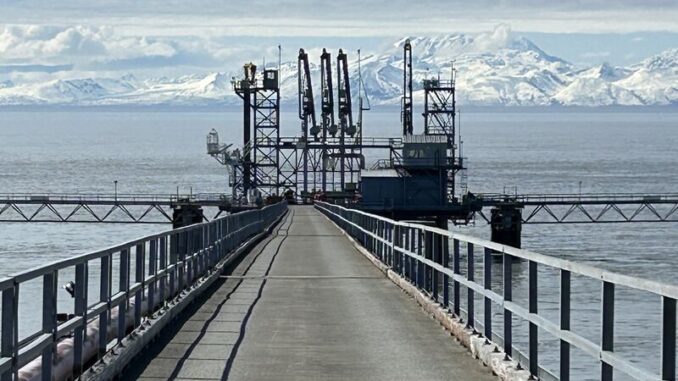
In a bold move to expand its footprint in the U.S. energy sector, Harvest Midstream Company has recently completed two significant acquisitions, one in Alaska and another spanning the Rocky Mountains region. These deals, announced and closed in November 2025, underscore Harvest’s strategy to bolster its midstream operations, enhance natural gas infrastructure, and position itself for long-term growth amid evolving energy demands. As an affiliate of Hilcorp Energy Company, Harvest is leveraging these assets to strengthen its role in gathering, processing, and distributing natural gas, while addressing regional energy challenges.
The Alaska Acquisition: Revitalizing the Kenai LNG Terminal
Harvest Midstream acquired the Kenai LNG Terminal in Nikiski, Alaska, from Marathon Oil, marking a pivotal step in securing energy supplies for Southcentral Alaska.
The facility, which was the first LNG export plant in the United States and has been idled since 2015, includes approximately 100 acres of industrial waterfront, 107,000 cubic meters of LNG storage capacity (equivalent to about 2.9 billion cubic feet of natural gas), and legacy dock infrastructure.
No purchase price was disclosed in the announcement.
This acquisition allows Harvest to repurpose the terminal from its historical export focus to support LNG imports, addressing potential short-term natural gas shortages in the region.
By collaborating with entities like Chugach Electric Association, Harvest aims to redevelop the site to bolster gas supplies for the Railbelt area, which serves a significant portion of Alaska’s population.
The move preserves the option for future LNG exports while prioritizing immediate imports to meet local needs.
The Rockies Acquisition: Expanding Gas Gathering and Processing
In a larger transaction, Harvest closed a $1 billion deal with MPLX LP (NYSE: MPLX) for midstream assets in the Uinta and Green River basins across Wyoming, Utah, and Colorado.
The assets encompass roughly 1,500 miles of pipelines—700 miles in the Uinta Basin and 800 miles in the Green River Basin—along with a combined natural gas processing capacity of 845 million cubic feet per day (MMcf/d). This includes 345 MMcf/d from the Ironhorse and Stagecoach facilities in Uinta and 500 MMcf/d from the Blacks Fork and Vermilion plants in Green River. Additionally, the deal adds 10,000 barrels per day of fractionation capacity.
Harvest will operate these systems, ensuring continuity of service for existing customers while exploring opportunities for further regional expansion.
The acquisition, initially announced in August 2025, represents a strategic push into the Rockies’ prolific natural gas plays.
Upsides for Harvest’s Investment in Energy
These acquisitions offer substantial upsides for Harvest Midstream’s investments, positioning the company as a key player in North America’s energy landscape. In Alaska, the Kenai LNG Terminal provides a strategic platform to enhance energy security in a remote region prone to supply constraints.
By enabling LNG imports, Harvest can help reduce reliance on diesel in isolated communities, promoting cleaner and more affordable energy alternatives.
This not only supports local utilities and businesses but also aligns with broader goals of energy transition, potentially lowering emissions and stabilizing prices for consumers. Long-term, the terminal’s dual import-export capability could capitalize on global LNG demand, opening new revenue streams if Alaska’s gas production rebounds or export markets strengthen.In the Rockies, the $1 billion investment in MPLX assets significantly scales Harvest’s operational capacity, adding high-value gathering and processing infrastructure in basins known for their robust natural gas reserves.
This expansion extends Harvest’s geographic reach, diversifying its portfolio beyond its traditional Gulf Coast and Permian Basin focus. The assets’ processing and fractionation capabilities enable efficient handling of natural gas liquids, which can command premium prices in downstream markets. With ongoing development in the Uinta and Green River basins, Harvest stands to benefit from increased throughput volumes, potentially boosting fee-based revenues from producers.
Overall, these moves fortify Harvest’s position as one of the largest privately held midstream companies in the U.S., with enhanced resilience against market volatility.
By investing in critical infrastructure, Harvest is poised to capture growth in domestic energy production, support U.S. energy independence, and adapt to shifting demands for natural gas as a bridge fuel in the clean energy era. Analysts may view this as a savvy play, given the rising importance of midstream services in optimizing supply chains and reducing flaring or waste.
As energy markets continue to evolve, Harvest Midstream’s proactive acquisitions in Alaska and the Rockies signal a commitment to innovation and sustainability, ultimately fueling the lives of families and businesses across these regions.
https://www.harvestmidstream.com/







Be the first to comment